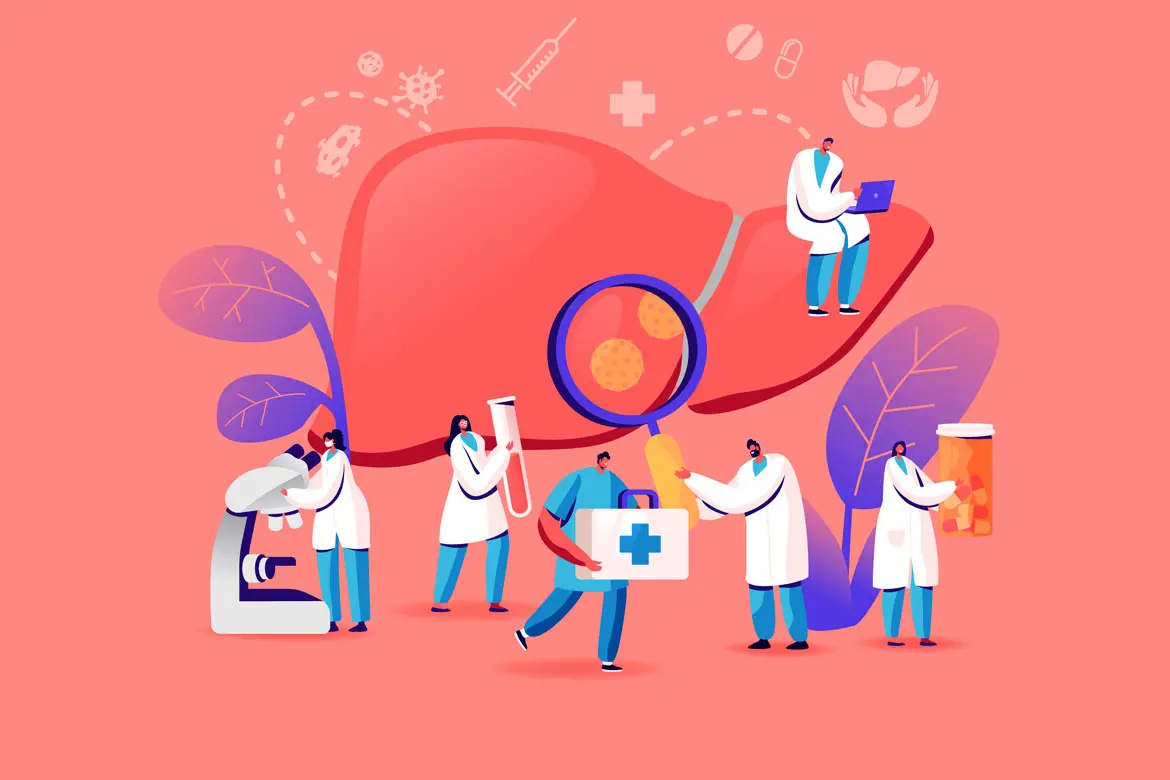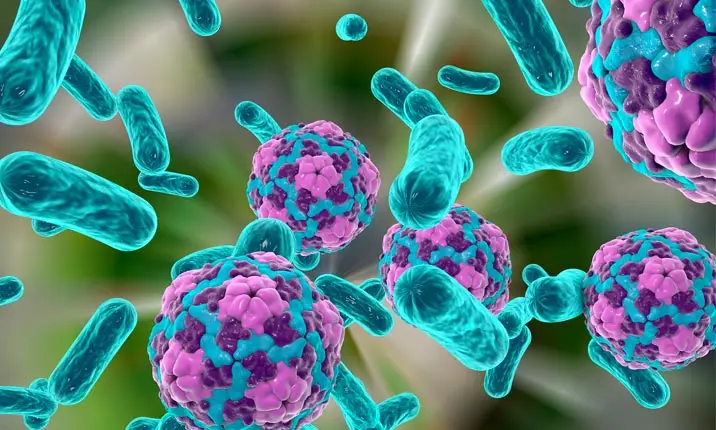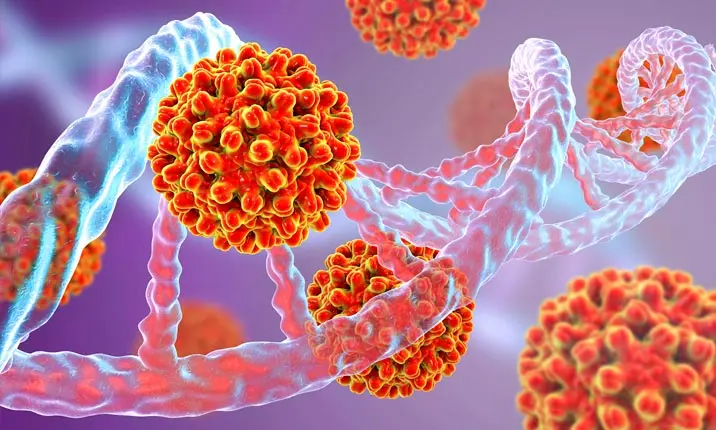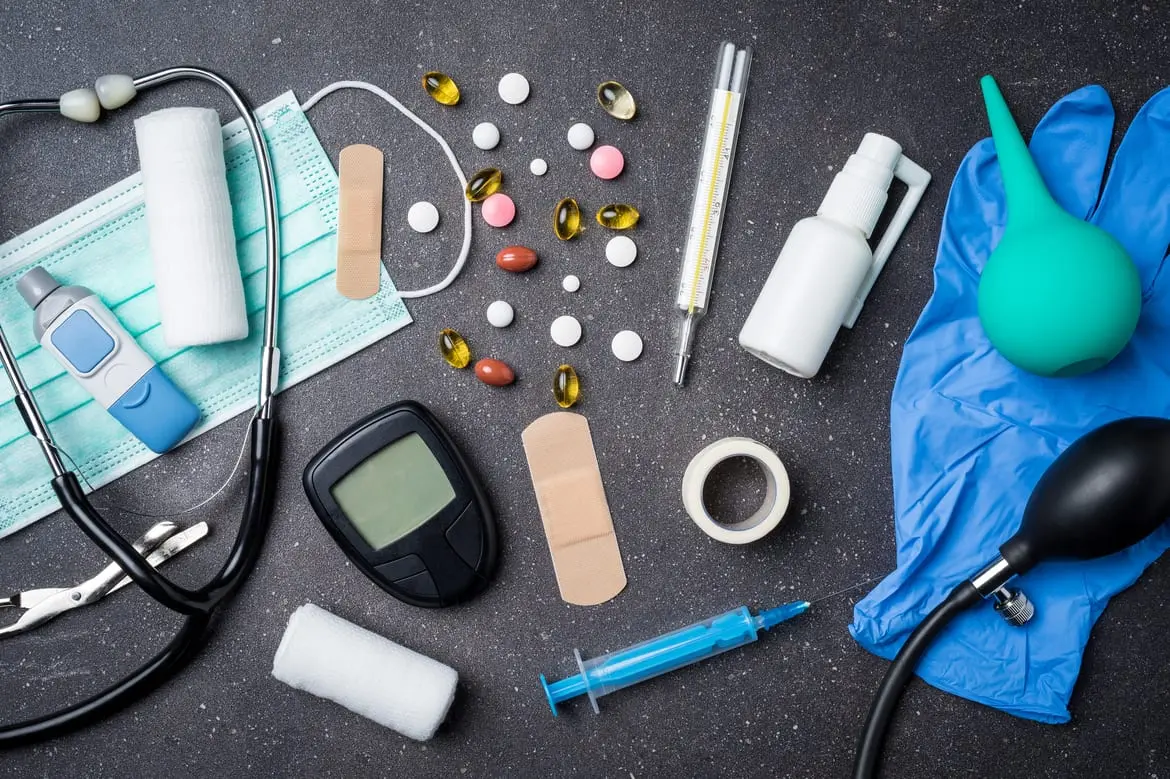-
-
Khu vực chăm sóc và điều trị


Nguồn: Getty images
Cách Bảo Vệ Gan Khỏi Bệnh Viêm Gan
Cập nhật lần cuối: 16 Tháng Sáu 2022 | 6 phút - Thời gian đọc
Bạn được khuyến nghị tiêm phòng viêm gan A và viêm gan B, nhưng bạn không chắc chắn tại sao việc này lại quan trọng? Hãy đọc tiếp để hiểu rõ hơn về lá gan của bạn và vai trò quan trọng của các vắc-xin này trong việc bảo vệ gan khỏi các vi-rút viêm gan.
Hiểu Rõ Về Lá Gan
Gan là một trong các cơ quan quan trọng nhất trong cơ thể con người. Có dạng hình nón và sở hữu khả năng tự tái tạo, gan nằm ở phần tư phía trên bên phải của ổ bụng, và đảm nhiệm khoảng 500 chức năng sống còn, không thể thiếu với sự sống của chúng ta, như chúng ta đang biết đến.
Điều này có nghĩa là gan chịu trách nhiệm điều hòa các hàm lượng chất hóa học trong máu của chúng ta bằng cách phân giải, cân bằng, và sản sinh các chất dinh dưỡng, cuối cùng sẽ được giải phóng vào trong máu.
Thêm vào đó, gan cũng là nơi mà thuốc men chúng ta uống khi đau ốm được chuyển hóa và xử lý thành các dạng mà cơ thể có thể dễ dàng hấp thụ. Khi có các chất độc hại đi vào cơ thể, gan phân giải các chất này và bài tiết các sản phẩm phụ ra ngoài theo mật, hoặc theo máu. Các sản phẩm phụ theo mật được bài tiết dưới dạng phân. Các sản phẩm phụ theo máu được các quả thận lọc ra và rời khỏi cơ thể theo nước tiểu.
Viêm Gan A Là Gì Và Lây Truyền Như Thế Nào?
Viêm gan A là một bệnh nhiễm trùng ở gan gây ra bởi Vi-rút Viêm Gan A (HAV). Vi-rút này thuộc họ vi-rút viêm gan gây ra viêm gan. HAV rất dễ lây và bạn có thể mắc phải bệnh viêm gan A từ thức ăn và nước uống bị nhiễm bẩn, các loài giáp xác sống trong nước ô nhiễm bởi nước thải, ăn các thức ăn được chế biến bởi người mắc bệnh, chạm vào các vật dụng bị nhiễm bẩn, cũng như tiếp xúc gần với bệnh nhân.
Rủi ro lây nhiễm viêm gan A gia tăng trong các trường hợp sau:
- Thường xuyên di chuyển hoặc làm việc tại khu vực bệnh viêm gan A phổ biến
- Quan hệ tình dục với bệnh nhân
- Sống cùng với bệnh nhân
- Dương tính với HIV
- Làm việc trong môi trường tiếp xúc với nhiều người khác, như trung tâm chăm sóc trẻ em
- Sử dụng chất kích thích bất hợp pháp
Triệu Chứng Và Phương Pháp Điều Trị Viêm Gan A
Viêm gan A có thể được chẩn đoán qua xét nghiệm máu. Các triệu chứng của viêm gan A có thể không xuất hiện cho đến vài tuần sau khi nhiễm vi-rút.
Các triệu chứng thường gặp bao gồm buồn nôn và nôn mửa, lờ đờ mệt mỏi, đau hoặc khó chịu vùng bụng, sốt nhẹ, chán ăn, phân màu đất sét, nước tiểu màu sậm, vàng da và vàng mắt (vàng da), ngứa dữ dội. Trong một vài trường hợp, bệnh nhân có thể không có biểu hiện triệu chứng nào.
Hiện tại chưa có phương pháp điều trị đặc hiệu cho viêm gan A và vi-rút thường tự đào thải ra khỏi cơ thể. Nhiễm trùng viêm gan A có thể ở mức tương đối nhẹ với đa số bệnh nhân đều hồi phục mà không để lại bất kỳ tổn thương nào lâu dài cho gan. Tuy nhiên, một tỉ lệ nhỏ bệnh nhân có thể phải chịu đựng các biến chứng nghiêm trọng, dẫn đến tình trạng cuối cùng là suy giảm chức năng gan.
Trong các trường hợp hiếm gặp, phẫu thuật ghép gan có thể cần thiết.
Phòng Ngừa Nhiễm Trùng Viêm Gan A
Mặc dù các hậu quả nghe có vẻ nghiêm trọng, tin tốt là bệnh viêm gan A có thể được phòng ngừa bằng việc tiêm vắc-xin. Liệu trình tiêm vắc-xin bao gồm hai mũi tiêm cách nhau 6 tháng.
Nếu đang có ý định di chuyển tới các quốc gia nơi viêm gan A phổ biến, sau đây là một vài lời khuyên về an toàn:
- Uống nước đóng chai
- Đánh răng với nước đóng chai
- Gọt vỏ và rửa sạch tất cả các loại trái cây với nước đóng chai
- Không uống các đồ uống không rõ nguồn gốc, đặc biệt đồ uống có kèm đá
- Trong trường hợp nước đóng chai không có sẵn, đun sôi nước máy trước khi dùng
- Không ăn cá và thịt sống, hoặc chưa chín kỹ
Nên tham vấn ý kiến của bác sĩ gia đình nếu bạn có bất kỳ mối lo nào về rủi ro mắc phải bệnh viêm gan A.
Viêm Gan B Là Gì Và Lây Truyền Như Thế Nào?
Tương tự như viêm gan A, viêm gan B là một bệnh nhiễm trùng ở gan gây ra bởi chủng B của vi-rút viêm gan (HBV). Viêm gan B có thể lây nhiễm do tiếp xúc với máu, tinh dịch hoặc các dịch thể khác của người bệnh. Con đường lây truyền phổ biến nhất của vi-rút này là khi người mẹ bị viêm gan B lây nhiễm sang đứa bé lúc sinh, cũng như tiếp xúc với máu của người bệnh. Tiếp xúc với máu bị nhiễm bẩn có thể diễn ra trong các hành vi có tính rủi ro cao, như quan hệ tình dục không an toàn, lạm dụng kim tiêm trong cộng đồng tiêm chích ma túy, và trong các môi trường y tế.
Triệu Chứng Và Phương Pháp Điều Trị Viêm Gan B
Triệu chứng của bệnh viêm gan B có thể dao động từ không triệu chứng hoặc ở dạng bệnh nhẹ, đến bệnh nặng khi bệnh nhân bị suy gan với khả năng dẫn đến tử vong. Các triệu chứng phổ biến của nhiễm trùng gồm mệt mỏi, buồn nôn và nôn mửa, khó chịu vùng bụng, và vàng da, mặc dù hầu hết mọi người không gặp phải bất kỳ triệu chứng nào.
Các bệnh viêm gan B được chia ra thành cấp tính và mãn tính. Điều trị viêm gan B cấp tính tập trung vào việc duy trì sự ổn định, cung cấp nước và cân bằng dinh dưỡng. Bác sĩ cũng có thể quyết định tạm thời không cho bệnh nhân sử dụng bất kỳ thuốc nào có thể làm tình trạng tổn thương gan nặng thêm.
Viêm gan mãn tính xảy ra khi tình trạng viêm gan kéo dài trên 6 tháng. Những người bị viêm gan B mãn tính có rủi ro cao bị xơ gan (sẹo), ung thư gan, và cuối cùng là suy gan. Để đối phó, bác sĩ sẽ kê đơn thuốc kháng vi-rút bằng đường uống. Thuốc nhằm làm chậm tiến trình phát triển thành xơ gan, giảm thiểu rủi ro mắc ung thư gan, và cải thiện tỷ lệ sống sót lâu dài.
Phòng Ngừa Lây Nhiễm Viêm Gan B
Rủi ro mắc bệnh viêm gan mãn tính thấp hơn 5% đối với người lớn, nhưng gần như chắc chắn 95% đối với trẻ em. Phương pháp phòng ngừa viêm gan B an toàn và hiệu quả nhất là thông qua tiêm phòng, và đó là lý do tại sao đây là một trong những mũi tiêm phòng được khuyến cáo rộng rãi trên toàn quốc ở Singapore. Tương tự như vậy, người lớn cũng được khuyến khích chủng ngừa viêm gan B. Liệu trình tiêm phòng bao gồm ba mũi tiêm, với mũi thứ hai và mũi thứ ba được tiêm một tháng, và sáu tháng, sau mũi tiêm đầu tiên.
Lời Khuyên Giữ Gìn Sức Khỏe Của Gan
Cách tốt nhất để giữ cho gan luôn khỏe mạnh là tránh bất kỳ điều gì có thể gây hại cho nó!
Sau đây là một vài phương pháp để có một lá gan khỏe mạnh, và có thể đảo ngược các ảnh hưởng của tổn thương gan:
1) Chế Độ Ăn Uống Và Tập Thể Dục
Điều quan trọng là phải tuân theo một chế độ ăn uống cân đối, và tập thể dục đều đặn để duy trì một cân nặng khỏe mạnh. Thừa cân hoặc béo phì làm tăng rủi ro mắc bệnh gan nhiễm mỡ không do rượu, một dạng bệnh gan ngày càng phổ biến do lối sống ít vận động. Tập thể dục thường xuyên có thể hỗ trợ giảm thiểu tích tụ mỡ trong gan.
Về mặt thực phẩm, tránh các loại đường tinh luyện, chất béo bão hòa, các bữa ăn nhiều calo, và các loại carbohydrate tinh chế. Thay vào đó nên dùng nhiều thực phẩm giàu chất xơ, như hoa quả tươi, rau xanh, ngũ cốc nguyên hạt và các loại ngũ cốc.
2) Uống Rượu Bia Ở Mức Độ Vừa Phải
Uống quá lượng rượu bia gây ra nhiều vấn đề về sức khỏe, đặc biệt là xơ hóa và chai cứng gan do rượu. Khuyến nghị nên dùng đồ uống có cồn ở mức vừa phải, hoặc tốt hơn là tránh xa tất cả các loại rượu bia.
3) Cảnh Giác Với Các Chất Độc Và Thuốc Men Có Thể Gây Tổn Thương Cho Gan
Một vài chất, như các loại thuốc thảo dược (bao gồm black cohosh và nhân sâm) và các chất kích thích bất hợp pháp (như heroin và cocaine) được biết đến là có thể gây ra tổn thương gan. Lạm dụng các loại thuốc không kê đơn có chứa acetaminophen cũng có khả năng gây ra tổn thương gan. Bắt buộc là chúng ta phải đọc kỹ các thành phần và hướng dẫn sử dụng trước khi uống bất kỳ loại thuốc nào nhằm tránh dùng quá liều. Người nào đã có các vấn đề về gan cũng nên hỏi ý kiến của bác sĩ trước khi uống thuốc hoặc thực phẩm chức năng.
4) Tránh Dùng Kim Tiêm Đã Bị Ô Nhiễm
Các hành vi chích thuốc không an toàn thường gặp ở những người dùng ma túy qua đường tĩnh mạch, hoặc tại một số tiệm xăm và xỏ lỗ cơ thể. Các hành động có tính rủi ro cao như vậy có thể lây truyền các bệnh như viêm gan B và viêm gan C. Cho nên, rất quan trọng là phải đảm bảo phải dùng kim vô trùng cho tất cả các quy trình có liên quan đến bất kỳ hình thức nào chích vào da.
5) Tiếp Xúc Với Máu
Nếu bị tiếp xúc với máu của người khác, như trong trường hợp bị kim đâm, xin vui lòng hỏi ý kiến bác sĩ ngay lập tức về cách xử lý sau khi phơi nhiễm.
6) Quan Hệ Tình Dục An Toàn
Quan hệ với nhiều bạn tình hoặc quan hệ bất an toàn làm tăng rủi ro mắc phải bệnh viêm gan B và C, và các bệnh lây truyền qua đường tình dục khác.
7) Cai Thuốc Lá
Hút thuốc được chứng minh là một nguyên nhân gây ung thư gan, và những người bị nhiễm viêm gan B hoặc C có rủi ro gia tăng. Nếu cần bất kỳ hỗ trợ nào để bỏ thuốc lá, xin tham vấn ý kiến bác sĩ gia đình.
8) Không Dùng Chung Các Vật Dụng Vệ Sinh Cá Nhân
Các vật dụng như bàn chải đánh răng, dao cạo râu và bấm móng tay có thể chứa một lượng máu rất nhỏ. Các đồ vật này có thể là con đường truyền bệnh tiềm ẩn. Cố gắng hết sức tránh dùng chung vật dụng cá nhân với người khác.
9) Tiêm Phòng
Vi-rút viêm gan là nguyên nhân phổ biến nhất gây ra các bệnh viêm gan. Vắc-xin phòng chống viêm gan A và viêm gan B đều có sẵn và được chứng minh là an toàn và hiệu quả. Tiếc là hiện chưa có vắc-xin phòng viêm gan C.
Hãy hỏi ý kiến bác sĩ gia đình của bạn để có thêm thông tin về tiêm phòng.
10) Vệ Sinh Tay
Luôn luôn nhớ rửa tay trước khi chế biến thức ăn, sau khi ăn, và ngay sau khi đi vệ sinh. Xà phòng và nước là cách tốt nhất để loại bỏ các vi-rút tiềm ẩn có thể gây ra tổn thương gan.
American Liver Foundation. (2021, June 24). 13 ways to a healthy liver. American Liver Foundation. Retrieved February 21, 2022, from https://liverfoundation.org/13- ways-to-a-healthy-liver/
Centers for Disease Control and Prevention. (2020, June 22). Hepatitis A. Centers for Disease Control and Prevention. Retrieved February 21, 2022, from https://www.cdc.gov/hepatitis/hav/index.htm
Johns Hopkins Medicine. (n.d.). Liver: Anatomy and functions. Johns Hopkins Medicine. Retrieved February 21, 2022, from https://www.hopkinsmedicine.org/health/conditions-and-diseases/liver-anatomy- and-functions
Mayo Foundation for Medical Education and Research. (2020, August 28). Hepatitis A. Mayo Clinic. Retrieved February 21, 2022, from https://www.mayoclinic.org/diseases-conditions/hepatitis-a/diagnosis- treatment/drc- 20367055
Ministry of Health Singapore. (2021, May). Hepatitis B Vaccine. HealthHub. Retrieved February 21, 2022, from https://www.healthhub.sg/a-z/medications/484/Hepatitis- B-Vaccine
World Health Organization. (2021, July 27). Hepatitis B. World Health Organization. Retrieved February 21, 2022, from https://www.who.int/news-room/fact- sheets/detail/hepatitis-b
Centers for Disease Control and Prevention. (2020, June 22). Hepatitis A. Centers for Disease Control and Prevention. Retrieved February 21, 2022, from https://www.cdc.gov/hepatitis/hav/index.htm
Johns Hopkins Medicine. (n.d.). Liver: Anatomy and functions. Johns Hopkins Medicine. Retrieved February 21, 2022, from https://www.hopkinsmedicine.org/health/conditions-and-diseases/liver-anatomy- and-functions
Mayo Foundation for Medical Education and Research. (2020, August 28). Hepatitis A. Mayo Clinic. Retrieved February 21, 2022, from https://www.mayoclinic.org/diseases-conditions/hepatitis-a/diagnosis- treatment/drc- 20367055
Ministry of Health Singapore. (2021, May). Hepatitis B Vaccine. HealthHub. Retrieved February 21, 2022, from https://www.healthhub.sg/a-z/medications/484/Hepatitis- B-Vaccine
World Health Organization. (2021, July 27). Hepatitis B. World Health Organization. Retrieved February 21, 2022, from https://www.who.int/news-room/fact- sheets/detail/hepatitis-b












